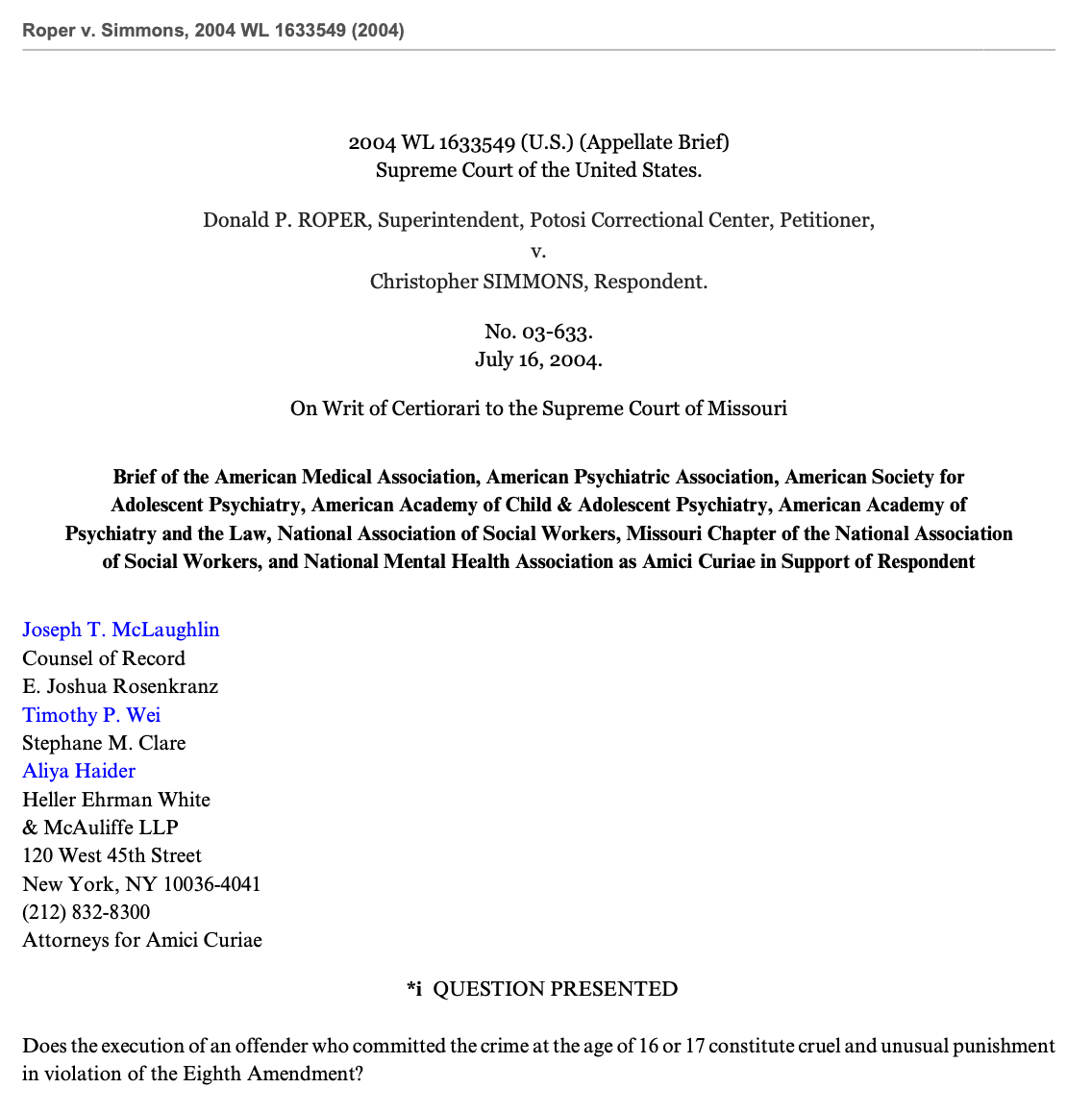
Summary of Argument
The adolescent's mind works differently from ours. Parents know it. This Court has said it. Legislatures have presumed it for decades or more. And now, new scientific evidence sheds light on the differences.
Scientists have documented the differences along several dimensions. Adolescents as a group, even at the age of 16 or 17, are more impulsive than adults. They underestimate risks and overvalue short-term benefits. They are more susceptible to stress, more emotionally volatile, and less capable of controlling their emotions than adults.
In short, the average adolescent cannot be expected to act with the same control or foresight as a mature adult.
Behavioral scientists have observed these differences for some time. Only recently, however, have studies yielded evidence of concrete differences that are anatomically based. Cutting-edge brain imaging technology reveals that regions of the adolescent brain do not reach a fully mature state until after the age of 18. These regions are precisely those associated withimpulsecontrol,regulationofemotions, risk assessment, and moral reasoning. Critical developmental changes in these regions occur only after late adolescence.
Science cannot, of course, gauge moral culpability. Scientists can, however, shed light on certain measurable attributes that the law has long treated as highly relevant to culpability. This Court has concluded that both adolescents who are under age 16 and mentally retarded persons exhibit characteristics - “disabilities in areas of reasoning, judgment, and control of their impulses,” Atkins v. Virginia, 536 U.S. 304, 306 (2002) - that categorically disqualify them from the death penalty. Offenders at age 16 and 17 exhibit those characteristics as well.